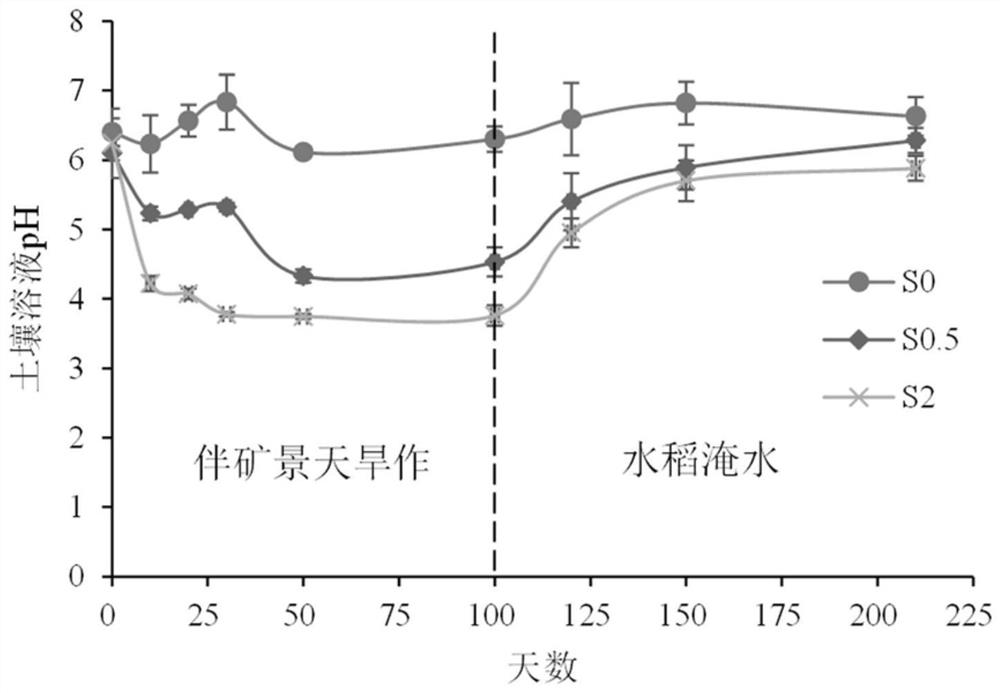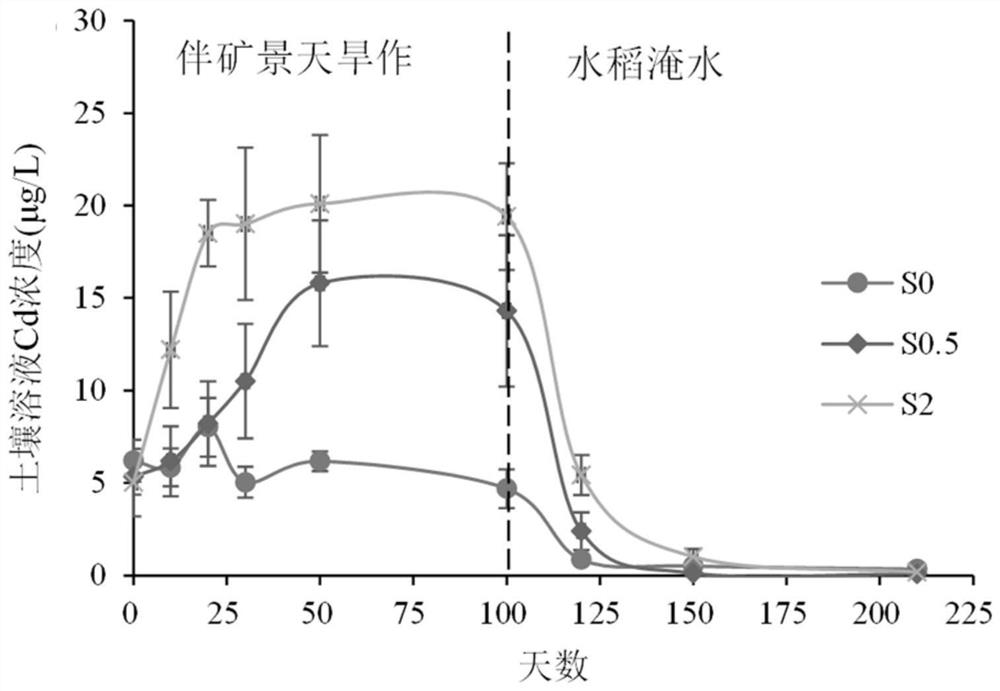A method for regulating and remediating cadmium-contaminated farmland soil while producing
A cadmium-polluted, farmland technology, applied in the field of heavy metal-contaminated soil, can solve the problems of increasing the risk of Cd absorption by rice crops after cropping, reducing the restoration efficiency of Sedum sedum with mines after cropping, so as to reduce the accumulation of Cd in rice and reduce Cd in soil Activity, absorption-inhibiting effect
- Summary
- Abstract
- Description
- Claims
- Application Information
AI Technical Summary
Problems solved by technology
Method used
Image
Examples
Embodiment 1
[0027] This example verifies the effects of P and Zn treatments in the rice season on rice and Sedum sedum with ore after cropping
[0028] 1 Materials and methods
[0029] The test soil was collected from a Cd pollution remediation base in Xiangtan, Hunan Province, with a Cd content of 0.28 mg·kg. -1 , Zn content 73mg·kg -1 , pH value is 4.63, organic matter content is 31.2g·kg -1 , the total nitrogen, phosphorus and potassium contents are 1.50, 0.40 and 11.8g·kg respectively -1 , the contents of available nitrogen, phosphorus and potassium are 93.0, 0.68 and 56.0mg·kg respectively -1 . The soil to be tested was air-dried and passed through a nylon sieve with a pore size of 2 mm. The tested rice was the short growth period variety W184 and the seedlings of Sedum sedum with ore.
[0030] Apply 0.5g·kg of urea uniformly to all soils in the pot test -1 , K 2 HPO 4 0.74g·kg -1 As base fertilizer (containing P100mg·kg -1 ), on this basis, a total of 5 treatments were s...
Embodiment 2
[0049] This example verifies the effect of rice season sulfate treatment on rice and Sedum sedum with ore
[0050] 1 Materials and methods
[0051] The soil for the test was collected from the surface layer of 0-20cm of farmland in Taicang, Jiangsu, and the parent material paddy soil of river alluvial, the total amount of Cd in the soil was 1.2mg·kg -1 , pH 6.4, organic matter content 54.1g·kg -1 , total nitrogen 1.80g·kg -1 , available phosphorus 55.0mg·kg -1 , available potassium 150mg·kg -1 . The soil was air-dried and passed through a 10-mesh (2mm) sieve. Greenhouse pot experiments were adopted, with a total of 1.5 kg of soil in each pot. And according to N100mg·kg -1 , P 30mg·kg -1 , K 80mg·kg -1 Add base fertilizer. Three treatments were set up, and sodium sulfate (Na 2 SO 4 )0, 151.5, 302.9 mg·kg -1 , namely SO 4 2- Concentrations are 0, 90, 180mg·kg -1 . Each treatment was replicated 4 pots.
[0052] Transplant 6 rice seedlings (the variety is Xiangza...
Embodiment 3
[0061] This example verifies the effect of sulfur treatment on sedum with ore and rice in the next season
[0062] 1 Materials and methods
[0063] The soil for the test was collected from the surface layer of 0-20cm of farmland in Taicang, Jiangsu, and the parent material paddy soil of river alluvial, the total amount of Cd in the soil was 1.2mg·kg -1 , pH 6.4, organic matter content 54.1g·kg -1 , total nitrogen 1.80g·kg -1 , available phosphorus 55.0mg·kg -1 , available potassium 150mg·kg -1 . The soil was air-dried and passed through a 10-mesh (2mm) sieve. Using the greenhouse pot test, each pot is filled with 1.5kg of soil, and according to N100mg·kg -1 , P 30mg·kg -1 , K 80mg·kg -1 Add base fertilizer. Set 3 treatments, add 0, 0.5, 2g·kg -1 Sulfur powder (60 mesh), each treatment repeated 4 pots (S0, S0.5, S2).
[0064] Cutting 4 Sedum sedum seedlings per pot were inserted into a 10cm soil solution sampler at a 45-degree angle, poured deionized water every day ...
PUM
 Login to View More
Login to View More Abstract
Description
Claims
Application Information
 Login to View More
Login to View More - R&D
- Intellectual Property
- Life Sciences
- Materials
- Tech Scout
- Unparalleled Data Quality
- Higher Quality Content
- 60% Fewer Hallucinations
Browse by: Latest US Patents, China's latest patents, Technical Efficacy Thesaurus, Application Domain, Technology Topic, Popular Technical Reports.
© 2025 PatSnap. All rights reserved.Legal|Privacy policy|Modern Slavery Act Transparency Statement|Sitemap|About US| Contact US: help@patsnap.com



